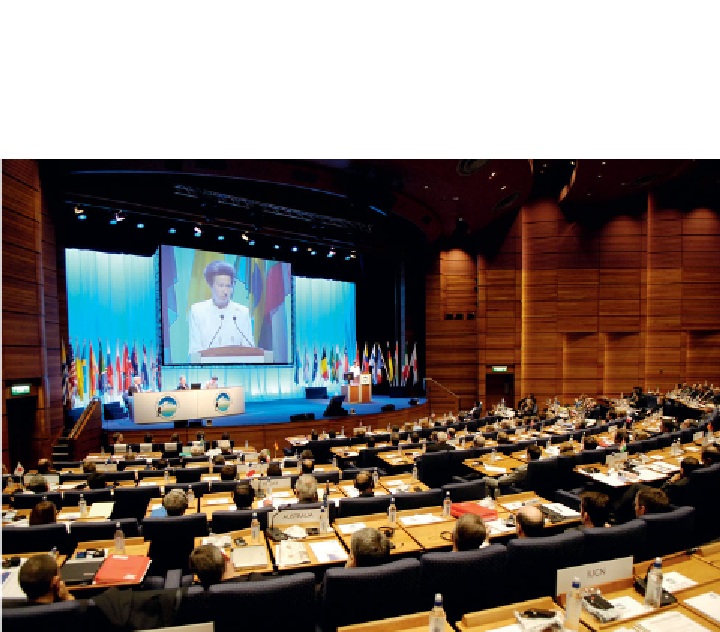Geoscience Reference
In-Depth Information
Figure 10.4
The Plenary of the XXIX Antarctic Treaty Consultative Meeting in session in
Edinburgh during the opening ceremony with Princess Anne. (Credit: Peter Bucktrout, BAS)
A third reason was that the three nations with competing claims on the
Antarctic Peninsula also recognised the importance of avoiding the escalation of
their con
ict into military deployments to the Peninsula.
So when the United States in 1958 invited them all to discussions to consider
developing a treaty for the continent the setting was apparently favourable. Clearly
the negotiations were also simpli
ed by the fact that there were no residents on the
continent. The largest challenge that had to be tackled was how to resolve the
questions of the con
icting Antarctic claims, including the positions of the
superpowers that did not recognise the sectorial claims but instead maintained
claims on the whole continent.
The negotiations were completed with the agreement on the Antarctic Treaty in
Washington on 1 December 1959. It was signed by the 12 participating countries:
Argentina, Australia, Belgium, Chile, France, Japan, New Zealand, Norway, South
Africa, the Soviet Union (now Russia), the United Kingdom and the United States.
These were the same countries as those that established SCAR almost 2 years earlier.
The last of the 12 to ratify the Treaty did so on 23 June 1961, which is the date
the Treaty entered into force.
The Treaty is remarkably simple in its form (see
Box 10.1
). It covers the
area south of 60
S, with the expressed purpose of setting aside Antarctica for peace



Search WWH ::

Custom Search